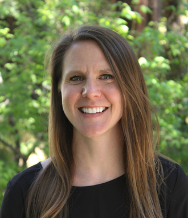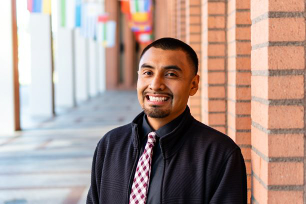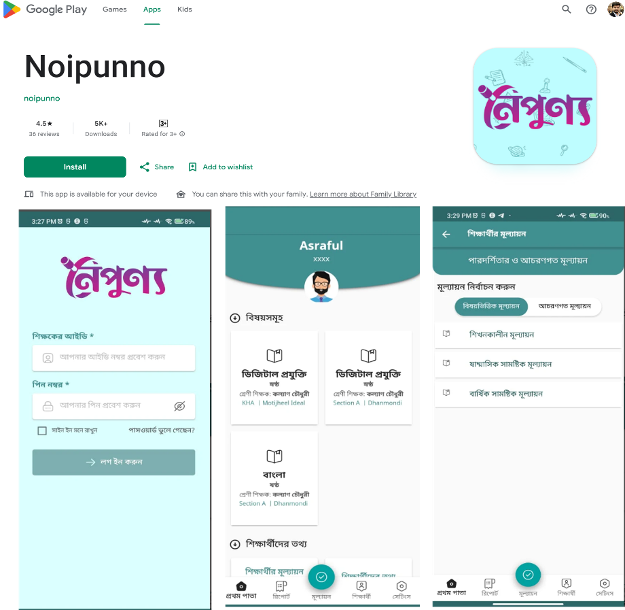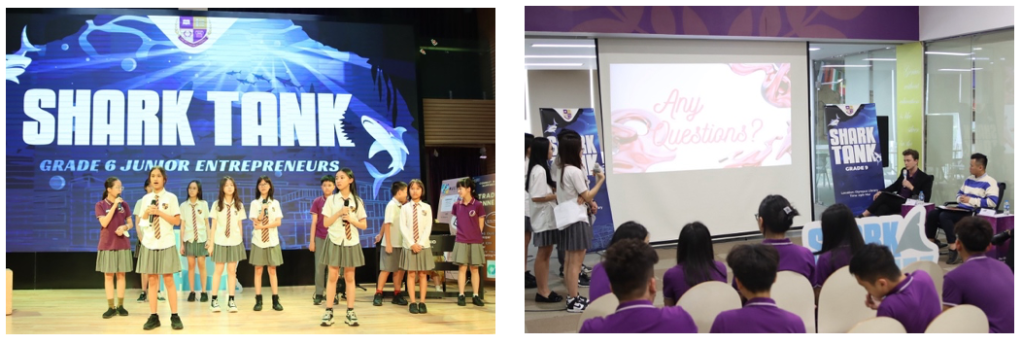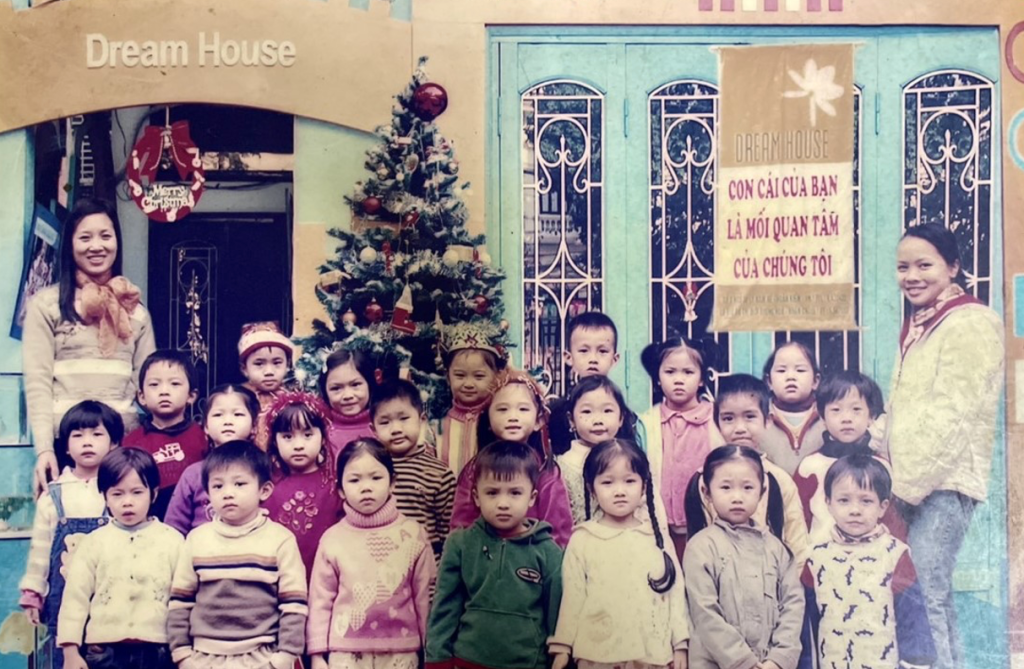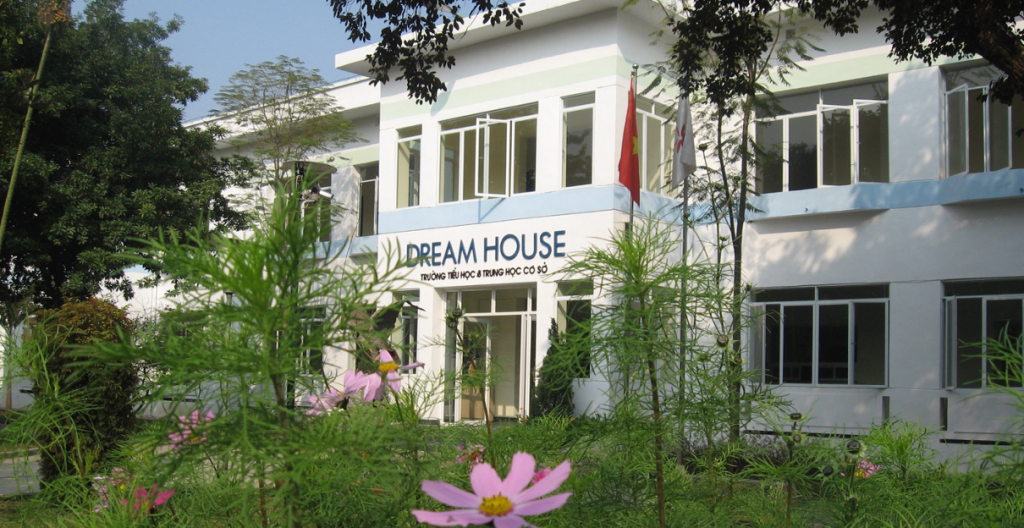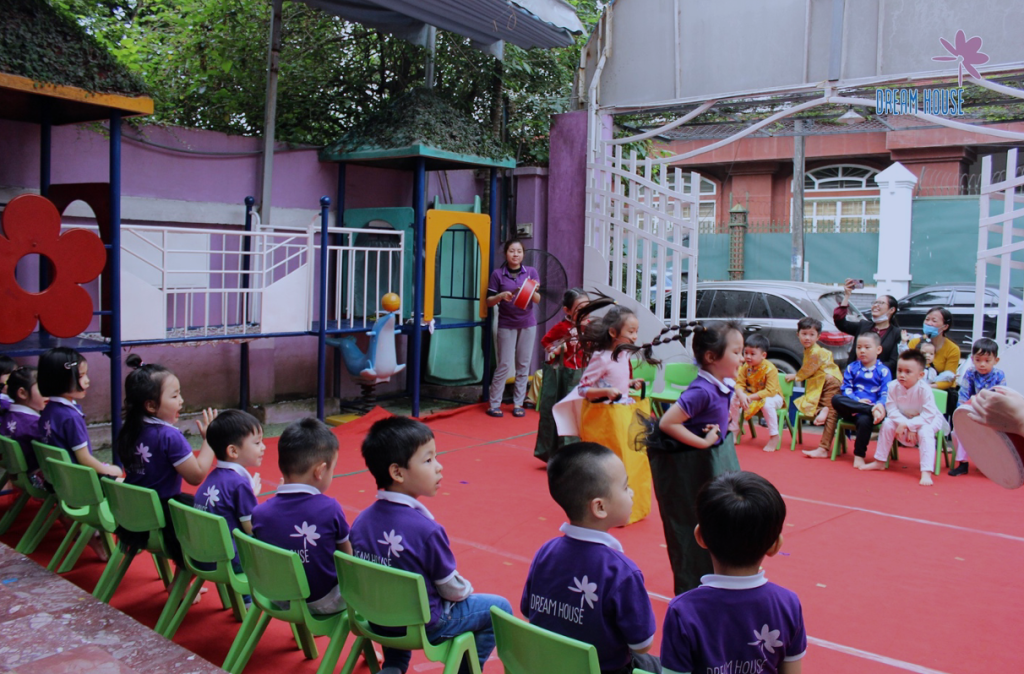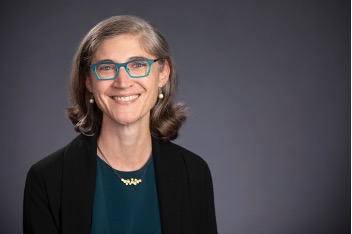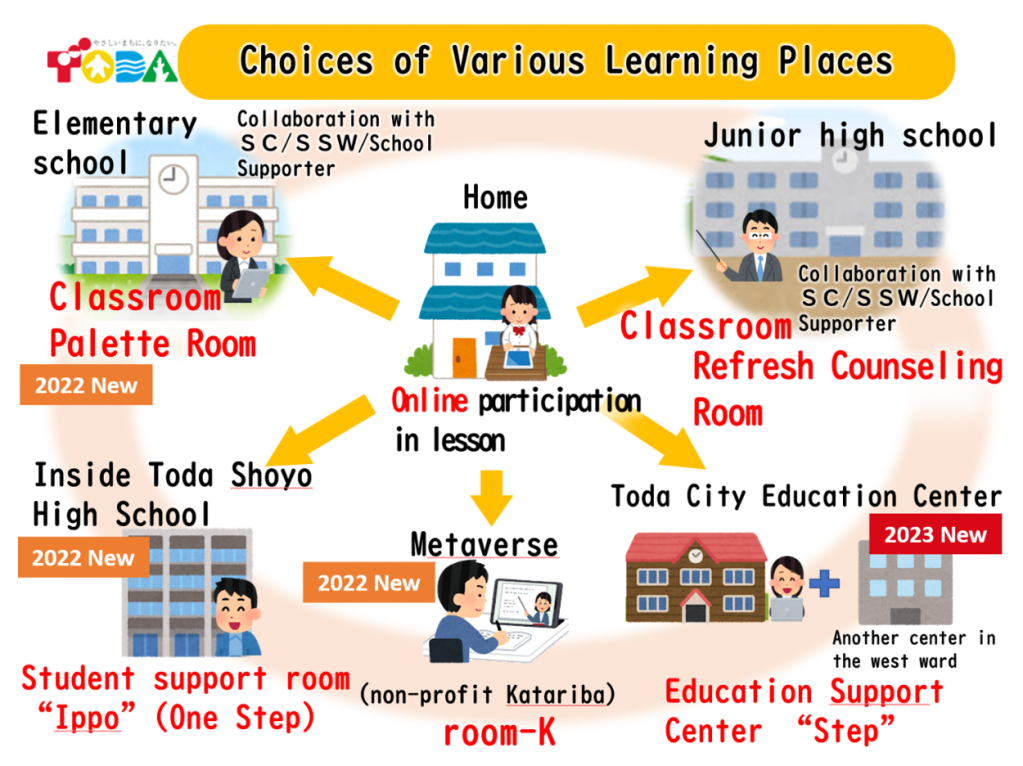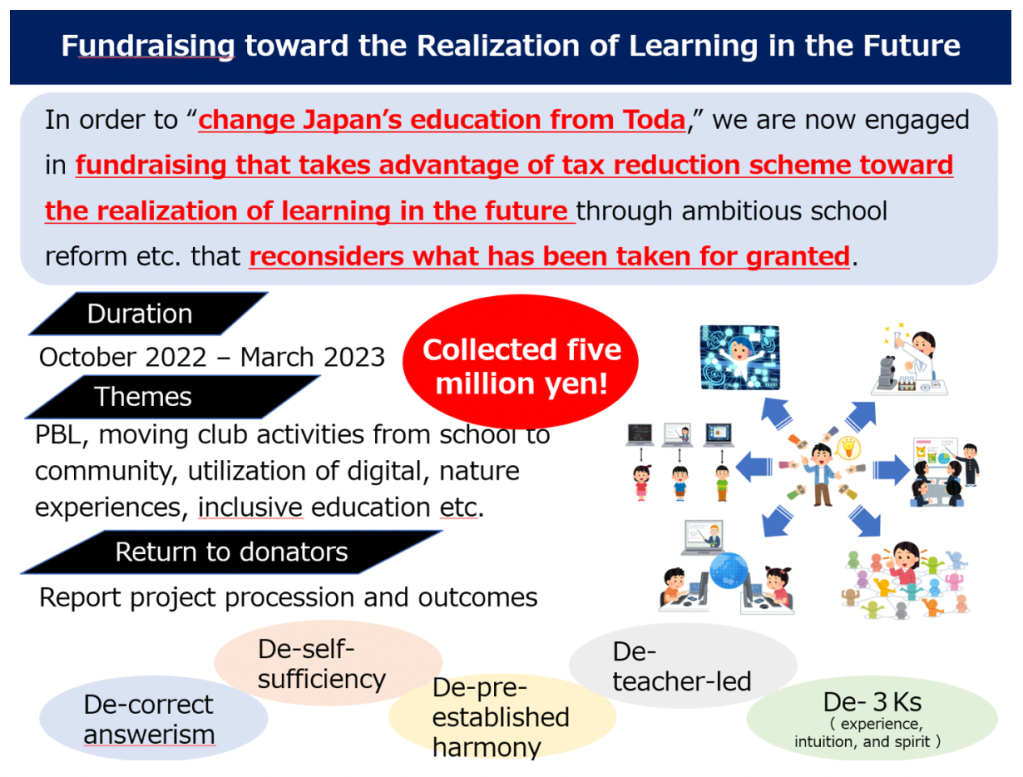This week, IEN features the work of scholars who are exploring organizational practices aimed at dismantling systemic inequity and promoting anti-racism within education. This post is the second in a series featuring excerpts of interviews with presenters participating in the Educational Change Special Interest Group sessions at the upcoming Annual Conference of the American Educational Research Association in Philadelphia in April. This post includes presenters from the session titled: “Studies of Equity-Minded Organizational Learning in Educational Contexts.” For part one of this series, see: Practices, Programs and Policies for Instructional Coaching. These interviews are part of the Lead the Change series produced by AERA’s Educational Change Special Interest Group. The full interviews can be found on the LtC website. The LtC series is currently produced by Alex Lamb (Outgoing Series Editor) and Liz Zumpe (Incoming Series Editor).
Studying Organizational Change in Sites of Power: Shifting from White-Centered to Equity-Centered Decision-making Processes in Postsecondary Philanthropy — Heather McCambly, University of Pittsburgh & Krystal Villanosa, Northwestern University
Lead the Change (LtC): The 2024 AERA theme is Dismantling Racial Injustice and Constructing Educational Possibilities: A Call to Action. How does your research respond to this call?
Heather McCambly (HM) & Krystal Villanosa (KV): This year’s theme centers two opposing verbs–dismantling and constructing. We can think of these two verbs as a dichotomy, as two sides of the same coin. However, in our projects together over the years we give particular attention to how the ability to engage in new, equitable and sustainable constructions in educational practice is co-constitutive with dismantling racist institutions, and vice versa. As a result, doing one without the other has clear dangers. For example, we analyze how educational grant makers come to notice their own racist practices and work to both weaken and replace them. As we have moved into the current white racial backlash to all things equitable and just in education and social policy, we are seeing firsthand that when equity-minded practices are introduced but not institutionalized they are all too easily swept away. This is true even at foundations (or universities, etc.) that may continue to profess “DEI” commitments.
LtC: What are some of the ideas you hope the field of Educational Change and the audience at AERA can learn from your work related to practice, policy, and scholarship?
HM & KV: We contend that this is a time for us to reflect as researchers on how our work supports organizations to go beyond critiquing or tinkering with white-serving routines, to replacing those routines in ways that cannot be easily eroded by new political tides. The paper featured in this symposium uses a critical institutionalization and organizational decision-making lens to examine how a prolonged effort toward equitable transformation at one postsecondary foundation changed a great many routines and mindsets, but often failed to institutionalize those changes in ways that would last. We strive to tell this story in a way that celebrates the innovative and successful changes we observed, while also using the organization’s failure to institutionalize equitable transformation as a phenomenon that opens up space to imagine and theorize alternative possibilities for future change work.
This is a time for us to reflect as researchers on how our work supports organizations to go beyond critiquing or tinkering with white-serving routines.
Navigating the (Im)Possibilities of Antiracist Organizational Learning: Insights from Graduate Students’ Experiences with ARIS — Aireale J. Rodgers & Brittney Pemberton, University of Wisconsin-Madison
Central to our understanding of educational change is the recognition that change, especially change initiatives driven by a commitment to equity, takes work – painstaking, strategic, visionary, and hard work.Yet, the critical questions of who labors, in what ways, and toward what futures often remain elusive in educational change scholarship. Overwhelmingly, the labor of equity-minded change work is distributed inequitably in educational institutions— often falling upon the shoulders of those most marginalized, notably Women of Color. This presents an important paradox: how are people, who are systematically disenfranchised and most vulnerable to institutional violence and exclusion within the institution, also the ones charged with “dismantling racial injustice and constructing educational possibilities”? Furthermore, how do Women of Color, who too often find themselves in this precarious predicament, experience and resist this labor?
Change, especially change initiatives driven by a commitment to equity, takes work – painstaking, strategic, visionary, and hard work.
We take these questions up in our paper: “Navigating the (Im)Possibilities of Antiracist Organizational Learning: Insights from Graduate Students’ Experiences with ARIS”. This study focuses on eight Women Graduate Students of Color affiliated with an antiracist organizational learning initiative at a Historically White Institution (HWI). We highlight our participants’ experiences enacting antiracist pedagogy, the types of labor they contribute, and their efforts to challenge and seek redress for their labor. Overall, we hope this paper makes three contributions: 1) draw attention to the disproportionate burden placed on minoritized people in antiracist organizational learning and change efforts, 2) recognize the invaluable contributions Women of Color graduate students make to anti-racism initiatives at HWIs, and 3) amplify their calls for material forms redress for their labor.
As two Black women scholar-educators who have navigated similar dynamics, we are deeply invested in revealing the labor dynamic of antiracist change work. We find Dr. Ruth Wilson Gilmore’s (2002) definition of racism as “group-differentiated vulnerability to premature death” particularly revelatory in conceptualizing what’s at stake with antiracist change work (p. 261). Dr. Gilmore emphasizes that the result of racism, and conversely the consequence of forsaking the pursuit of antiracism, is premature death. Put otherwise, (anti)racism is a matter of life and death — one that is as embodied and material as it is ideological. We started 2024 with the news of the tragic and untimely death of Dr. Antoinette Candia-Bailey, affectionately known by many as Bonnie (may she rest in peace and power). As we watched memorials pour in through social media, we were awestruck by the legacy she left and the lives she touched for the better. Dr. Bonnie epitomized what it meant to be a changemaker. In fact, many of us know a Dr. Bonnie and many of us have also lost a Dr. Bonnie far too soon.
If racism structures who lives and who dies, antiracist change work must be about creating tangible and sustainable pathways for people on the death-dealing end of the racial hierarchy to live long, full, self-determined lives. Articulations of educational change work that don’t adequately deal with the ways educational institutions operate as death-dealing machines that disproportionately murder the minds-bodies-spirits of People of Color, especially Black women, miss a crucial dimension. We are thrilled that the papers across our symposium will highlight that educational change demands not only recognizing but also continuously and actively interrogating the implications of power asymmetries on change work, its implications for the work, and its impact on the people who are doing this work.
How Organizational Investments in Campus Cultural Centers Can Demobilize Equity — Jackie Pedota, University of Texas at Austin
LtC: The 2024 AERA theme is Dismantling Racial Injustice and Constructing Educational Possibilities: A Call to Action. How does your research respond to this call?
Jackie Pedota (JP): The theme for 2024 is deeply connected to all my research endeavors as a scholar. I explore issues within higher education at the intersection of race, power, and organizational change to understand how racialized organizational dynamics perpetuate systemic inequities for minoritized communities in ways that reinforce and reproduce racial hierarchies. Specifically, my research agenda examines how Diversity, Equity, and Inclusion (DEI) efforts function within racialized organizations like predominantly white institutions (PWIs). In my work, I leverage organizational and critical theories to uncover the organizational conditions that are required for racially and ethnically minoritized students, staff, and faculty to not just survive, but really thrive, and how their thriving can ultimately open up possibilities to shift the entire campus climate to promote racial equity.
I leverage organizational and critical theories to uncover the organizational conditions that are required for racially and ethnically minoritized students, staff, and faculty to not just survive, but really thrive, and how their thriving can ultimately open up possibilities to shift the entire campus climate to promote racial equity.
Much of my work is heavily influenced by scholars and mentors who strive to dismantle racial inequities to create more just futures for Black, Latino/a/x/e, Indigenous, Asian American, Pacific Islander, and Middle Eastern/North African communities, such as Lori Patton Davis, Victor Ray, Liliana Garces, Antar Tichavakunda, and Heather McCambly. Guided by their prior work, my most recent project, which I’ll present this year at AERA, examines what can happen when PWIs choose to invest (or not invest) in student-initiated diversity initiatives. Over the past two years, I’ve used multiple case study methods to explore three PWIs whose Latino/a/x campus cultural centers, over time, have received varying levels of institutionalized support via infrastructure, staffing, and other financial resources. These additional resources are essential because they create new opportunities for these historically under-resourced centers to increase and broaden their reach while shifting the burden of labor from students to full-time professional staff. Yet, to gain access to this additional financial support and resources provided by university leadership, these once students-run centers and liberatory spaces that bore out of student activism must become more formally embedded within the broader university structure, a structure historically created to privilege white students and maintain white supremacy by reducing the agency of minoritized groups by any means necessary.
LtC: What are some of the ideas you hope the field of Educational Change and the audience at AERA can learn from your work related to practice, policy, and scholarship?
JP: First, I want scholars, administrators, and senior university leaders to understand how seemingly neutral university structures, policies, and practices meant to establish order, efficiency, and “fairness” can perpetuate systemic inequities for minoritized communities in ways that reinforce racial hierarchies within predominantly white organizations. In a previous publication examining the institutionalization of one cultural center, I argue how seemingly neutral, everyday organizational structures, policies, culture, and practices at PWIs (like student fee allocation processes) can disproportionately impact racially and ethnically minoritized university populations, reducing their agency while causing psychological harm (Pedota, 2023). These negative impacts can also be magnified over time as cultural centers become more formally and structurally embedded within the broader university environment by new or existing administrative burdens. These burdens disproportionately take time and resources away from racially and ethnically minoritized groups, as they often face stricter regulatory and accountability standards when compared to other groups across campus. Thus, organizational investments in diversity initiatives, no matter how well-intentioned, can diminish the impact of these initiatives as they become part of an inherently racist system that is antithetical to their intended purpose.
Second, I want to demonstrate how organizational change via institutionalized support for diversity initiatives can provide many important benefits. But, without other substantial campus-wide efforts and attention to racialized organizational dynamics embedded within PWIs, these investments and the benefits these investments produce are limited. In my current project, I found that while additional funding, staffing, infrastructure, and resources were crucial for broadening and increasing support for Latino/a/x students, staff, and faculty, these isolated efforts also serve to absolve university leaders from engaging in more university-wide organizational changes that disrupt racial inequities. As informed by the work of our discussant Eric Felix, institutional leaders must move beyond conceptions of isolated/consolidated DEI labor to a more collaborative/distributed model of shared responsibilities, where everyone is organizationally responsible and accountable for the success and well-being of minoritized campus communities.
Ultimately, I hope my work pushes university administrators and senior leaders to move beyond trying to address individual bias or interpersonal racism (e.g., diversity trainings) to understand that these problems are more systemic and historically embedded within these organizations, even in the most subtle ways. My work demonstrates how diversity initiatives, as they currently function within racialized organizations, are insufficient but vital within the present socio-political context. Racism is built into higher education systems, and if we want to dismantle racial injustice, leaders need to look inward and commit to assessing and altering everyday organizational structures, policies, practices, norms, and routines that continue to advantage white students, staff, faculty, and senior leaders at the expense of racially and ethnically minoritized campus communities. I hope my empirical work is a call to action and that leaders can leverage it to demonstrate the urgent need to dismantle existing inequitable organizational structures, policies, and practices by engaging in racialized change work, as termed by Heather McCambly.
Teacher Education’s Racial Discourses & Novice Teacher Reflections: Questions raised for programs’ racial equity initiatives — Joy Esboldt, University of California, Berkeley
LtC: The 2024 AERA theme is Dismantling Racial Injustice and Constructing Educational Possibilities: A Call to Action. How does your research respond to this call?
Joy Esboldt (JE): My paper “Teacher Education’s Racial Discourses and Novice Teacher Reflections: Questions raised for programs’ racial equity initiatives” examines the efforts and impacts of University-Based Teacher Education (UBTE) Programs’ efforts to address and engage with antiracism through the perspectives of recent graduates, now practicing in K-12 schools. More broadly, my research asks how teachers, leaders, and organizations learn for transformative racial equity and what are the multi-level (micro, meso, macro) mechanisms that shape, support, and constrain such learning. As such, it responds to AERA’s theme in several ways.
The work of teachers for transformative change in public education is critical, yet deeply constrained.
First, the theme calls on us to “examine the most complex issues and challenges…not avoid[ing] but embrace[ing] the most vexing problems” around the enduring presence of racial injustice in schools. The enduring urgency of preparing teachers to work for racial equity is well-established within UBTE. However, this task and the study of it are often categorized as inherently limited as UBTEs strive to prepare pre-service teachers for vastly different contexts of future employment which will inevitably shape teachers’ enactment teachers. Building on the theoretical framework of multisited ethnographies, which examines what “takes hold as people and practices move across time and space” (Vossoughi & Gutiérrez, 2014, p. 604), my work examines how novice teachers engage and adapt discourses and ideas of racial equity from UBTE once practicing in schools. In doing so, it offers reflective questions for UBTE’s own organizational equity learning and work to prepare and support teachers.
Second, the call urges attention to dismantling racial injustice to not simply be limited to the “halls of academia” but to attend to other learning communities, constructed identities, and contend with our own lived experiences. In examining how teachers negotiate meanings of racial equity from their UBTE programs within their new schools and districts, my research holds implications for schooling organizations and equity-oriented practitioners as well as for academic research. This work raises theoretical questions around the relationship between sites of learning, but it also calls on UBTE programs, school leaders, and practicing teachers to not just critique shortcomings but imagine alternative ways to build the world “as it should be.”
LtC: What are some of the ideas you hope the field of Educational Change and the audience at AERA can learn from your work related to practice, policy, and scholarship?
JE: I approach my scholarship with the belief that the work of teachers for transformative change in public education is critical, yet deeply constrained within existing systems and structures as well as histories and dominant narratives (see Leonardo & Esboldt, 2023). Likewise, transformative change within U.S. UBTE is needed to support the development of equity-, justice-, and asset-oriented antiracist educators (Souto-Manning, 2019; Zeichner, 2014), while not forgetting UBTE’s history, contributions, and public role within our neoliberal era (Anderson, 2019; Horsford et. al., 2019; Lipman, 2011). Finally, given the importance of local context and the complexity of teaching, there is no universal formula to prepare and support teachers to work for racial justice (Bartolomé, 1994; Philip, 2019). As I echo scholars and practitioners who have asserted this for generations, I hope my scholarship extends this conversation with implications for practice, policy, and scholarship.
For practice, my work generates a lens for reflection and critical questions for teacher education programs committed to transformative change around how their program supports and constrains teachers’ future understandings and work for racial justice in complex and situated ways (Philip & Benin, 2014). While teachers graduate and enter diverse external environments outside of UBTE’s scope and control, UBTE program leaders might intentionally seek out graduates’ experiences, stories, and understandings to better understand the various effects and growth areas for program efforts. We know that teachers’ efforts to advance racial equity, justice, and critical democracy will inherently be challenged by the systems around them. Specific insight into the ways UBTE graduates navigate, make sense of, and/or feel (under)prepared to address these challenges in classrooms/schools might allow programs to deliberately support pre-service teachers’ development to critically theorize and grapple with the unique dynamics, contexts, and relations of students they will later face. Rather than an external mandate of reform, this perspective prompts transformation initiated from within (Ellis, 2019; Souto-Manning, 2019).
For equity-driven leaders and policymakers, this work necessitates interrogating the impact of various discourses of equity and epistemologies of teacher learning in teacher education policy, programs, and structures. This reminds us that it is not enough for equity or racial justice to be named, included, or nodded to, instead, we must ask how policies, structures, and norms within teacher education policy and programs support or constrain teachers’ critical efforts for transformative social change in the future, rather than simply upholding the status quo.
Finally, for scholarship, my work adds to calls to move beyond simple binaries of practice-belief gaps in teacher learning or the two-worlds problem of teacher education. While important constraints to consider, our scholarship must build from this foundational research, to reconceptualize transformative learning for teachers as a mechanism for educational change in all its complexity. I add to calls to ask multi-leveled and multi-sited questions from our research and to design studies that speak across levels of society and sites of practice.
A Racialized Organization Approach to Faculty Agency for Racial Equity Change Work — Román Liera, Montclair State University
LtC: The 2024 AERA theme is Dismantling Racial Injustice and Constructing Educational Possibilities: A Call to Action. How does your research respond to this call?
Román Liera (RL): In studying organizational change to advance racial equity in higher education, I have learned that dismantling racial injustice and constructing possibilities for transformation often involves the following four components: organizational learning, agency, evaluation contexts, and racial equity (e.g., Dowd & Liera, 2018; Liera, 2020a; 2020b; 2023; Liera & Dowd, 2019; Liera & Hernandez, 2021). In higher education, faculty members are uniquely positioned to advance racial equity across disciplinary departments and program offices because they often oversee their university’s teaching, research, and service components (Griffin, 2020). However, faculty who wish to advance racial equity may be deterred by a lack of training, a lack of support from leadership, or an uncertain sense of authority within larger university power structures (McNair et al., 2020). Although theories of change emphasize multi-level, multi-stakeholder change efforts (Kezar et al., 2021) and equity-minded, inquiry-driven change efforts (Bensimon & Malcom, 2012; Dowd & Bensimon, 2015), faculty agency, specifically within the context of racial equity change is under-theorized.
The paper I am presenting at AERA 2024, “A Racialized Organization Approach to Faculty Agency for Racial Equity Change Work,” aligns with this year’s AERA theme because I applied a critical race organizational lens to synthesize the literature on faculty agency. Specifically, I reviewed the literature on faculty agency to understand the organizational components that empower and hinder faculty members from enacting their agency to advance racial equity. Focusing on faculty members’ agency within the context of organizational change highlights the interconnection between organizational learning, agency, evaluation contexts, and racial equity. For example, with leadership support, faculty members can change structures when they learn how their campus racial culture perpetuates racial inequity and how to implement equity-mindedness in practices. Moreover, faculty empowered to change structures can align campus-level policy with department-level practices that centralize equity-mindedness in evaluation contexts (Liera, 2020a; 2023). However, I have also found that without accountability structures, faculty, especially those with identities associated with low organizational status (e.g., pre-tenured women of color), encountered challenges related to the intersectional relations of power, race, gender, tenure, and discipline (Liera, 2020b; Liera & Hernandez, 2021). For these reasons, my manuscript on faculty agency to advance racial equity responds to this year’s AERA call to dismantle racial injustice and create educational possibilities.
LtC: What are some of the ideas you hope the field of Educational Change and the audience at AERA can learn from your work related to practice, policy, and scholarship?
RL: I hope my research provides theoretical and practical guidance for administrative and faculty leaders to strategize how to best empower faculty to enact their agency to advance racial equity across various organizational units on campus. Specifically, I hope understanding faculty agency as an organizational structure highlights the importance for administrative and faculty leaders to understand how their university’s racial hierarchy hinders racial equity change efforts. Thus, equipping faculty members to advance racial equity requires an assessment of campus racial culture, accountability structures, and leadership support.
Equipping faculty members to advance racial equity requires an assessment of campus racial culture, accountability structures, and leadership support.
About the Interviewees:
Heather McCambly is an assistant professor of critical higher education policy at the University of Pittsburgh and a faculty affiliate at the Office of Community College Research and Leadership at the University of Illinois, Urbana-Champaign. As a critical organizational scholar, she uses multiple analytic methods to examine the role of funders, policy, and politics in shaping more (or less) racially just futures in postsecondary education.
Krystal Villanosa is a learning scientist who studies education practitioners’ conceptualizations of racial and educational equity. Drawing from multiple theoretical and analytical traditions, she attends to the consequences and material impacts of practitioners’ beliefs and attitudes about equity on how they design and implement interventions to remediate educational inequality.
Aireale J. Rodgers is an Assistant Professor of Higher Education and Anna Julia Cooper Fellow at the University of Wisconsin-Madison. Drawing on frameworks from critical race studies and the learning sciences, Dr. Rodgers’ scholarship seeks to illuminate how people’s everyday (mis)understandings about race and racism shape learning across various higher education ecologies. Currently, she uses qualitative techniques to study faculty development programs, graduate student socialization processes, and classroom teaching and learning to better understand how educators can facilitate learning that advances critical race consciousness for faculty and students in postsecondary institutions.
Brittney Pemberton is a second-year doctoral student at the University of Wisconsin-Madison in the Department of Educational Leadership and Policy Analysis. Her research explores the role that intimate relationships (e.g., friends, family, romantic partnerships) play in Black women academics’ work/health (im)balance. By calling attention to systemic and institutional barriers that negatively affect the well-being of Black women in academia, Brittney’s work seeks to implement policies and practices that support Black women’s ability to thrive both inside and outside of the academy.
Jackie Pedota is a Doctoral Candidate and incoming Postdoctoral Scholar within the Educational Leadership and Policy department at the University of Texas at Austin. She’s had a wealth of professional experiences across the P-20 educational pipeline, including roles in K-12 instruction, non-profit management, educational technology, and higher education administration. Jackie’s research agenda examines how DEI efforts function within racialized organizations, and her work has been published in peer-reviewed journals, like the Journal of Cases in Educational Leadership, and highlighted in new outlets such as Inside Higher Ed.
Joy Esboldt is a Ph.D. candidate in Critical Studies of Race, Class, and Gender in the School of Education and member of the Women, Gender, and Sexuality Designated Emphasis at the University of California, Berkeley. Her research focuses on teachers’ learning about race, equity, and power in classrooms, schools, and society. Esboldt is a former public school teacher and a current NAEd/Spencer Dissertation Fellow.
Román Liera is an Assistant Professor of Higher Education in the Department of Educational Leadership at Montclair State University. He designs his research program to study racial equity and organizational change in higher education. His current research projects focus on understanding how racism operates in doctoral student socialization, the academic job market, faculty hiring, reappointment, tenure and promotion, presidential hiring, and racial equity professional development.
References:
Anderson, L. (2019). Private interests in a public profession: Teacher education and racial capitalism. Teachers College Record, 121(6).
Bensimon, E. M., & Malcom, L. (2012). Confronting equity issues on campus: Implementing the equity scorecard in theory and practice. Stylus Publishing.
Bensimon, E. M., & Malcom, L. (2012). Confronting equity issues on campus: Implementing the equity scorecard in theory and practice. Stylus Publishing.
Dowd, A. C., & Bensimon, E. M. (2015). Engaging the “race question”: Accountability and equity in U.S. higher education. Teachers College Press.
Dowd, A. C., & Liera, R.(2018). Sustaining change for racial equity through cycles of inquiry. Education Policy Analysis Archives, 26(65), 1-46. https://doi.org/10.14507/epaa.26.3274.
Ellis, V. (2018). Transformation: What exactly does it mean? Retrieved from https://vivellis.org/2018/04/15/transformation-what-exactly-does-it-mean/
Griffin, K. A. (2020). Institutional barriers, strategies, and benefits to increasing the representation of women and men of color in the professoriate. In L. W. Perna (Ed.), Higher education: Handbook of theory and research (Vol. 35, pp. 1-73). Springer Nature.
Griffin, K. A. (2020). Institutional barriers, strategies, and benefits to increasing the representation of women and men of color in the professoriate. In L. W. Perna (Ed.), Higher education: Handbook of theory and research (Vol. 35, pp. 1-73). Springer Nature.
Horsford, S. D., Scott, J., & Anderson, G. L. (2019). The politics of education policy in an era of inequality. Routledge.
Kezar, A., Holcombe, E., Vigil, D., & Dizon, J. P. M. (2021). Shared equity leadership: Making equity everyone’s work. American Council on Education and USC Rossier Pullias Center for Higher Education.
Leonardo, Z., & Esboldt, J. (2023). White woman: Or, the abused abuser’s role in U.S. educational stratification. In R. J. Tierney, F. Rizvi, & K. Erkican (Eds.), International Encyclopedia of Education (Fourth Edition) (Fourth Edition, pp. 93–103). Elsevier. https://doi.org/10.1016/B978-0-12-818630-5.08012-X
Liera, R. (2020a). Moving beyond a culture of niceness in faculty hiring to advance racial equity. American Educational Research Journal, 57(5), 1954-1994. https://doi.org/10.3102/0002831219888624
Liera, R. (2020b). Equity advocates using equity-mindedness to interrupt faculty hiring’s racial structure. Teachers College Record, 122(9), 1-42.
Liera, R. (2023). Expanding faculty members’ zone of proximal development to enact collective agency for racial equity in faculty hiring. The Journal of Higher Education, 94(6), 766-791. https://doi.org/10.1080/00221546.2023.2195769.
Liera, R., & Dowd, A. C. (2019). Faculty learning at boundaries to broker racial equity. The Journal of Higher Education, 90(3), 462-485. https://doi.org/10.1080/00221546.2018.1512805.
Liera, R., & Hernandez, T. E. (2021). Color-evasive racism in the final stage of faculty searches: Examining search committee hiring practices that jeopardize racial equity policy. The Review of Higher Education, 45(2), 181-209. https://doi.org/10.1353/rhe.2021.0020.
Lipman, P. (2011). The new political economy of urban education: Neoliberalism, race, and the right to the city. New York, NY: Routledge.
McNair, T. B., Bensimon, E. M., & Malcolm-Piqueux, L. (2020). From equity talk to equity walk: Expanding practitioner knowledge for racial justice in higher education. Jossey-Bass.
Philip, T. M. (2019). Principled improvisation to support novice teacher learning. Teachers College Record, 121(6).
Philip, T. M., & Benin, S. Y. (2014). Programs of teacher education as mediators of White teacher identity. Teaching Education, 25(1), 1–23. https://doi.org/10.1080/10476210.2012.743985
Ray, V. (2019). A theory of racialized organizations. American Sociological Review, 84(1), 26-53.
Souto-Manning, M. (2019). Transforming university-based teacher education: Preparing asset, equity, and justice oriented teachers within the contemporary political context. Teachers College Record, 121(6).
Vossoughi, S., & Gutiérrez, K. D. (2014). Studying Movement, Hybridity, and Change: Toward a Multi-sited Sensibility for Research on Learning Across Contexts and Borders. National Society for the Study of Education, 113(2), 603–632.
Zeichner, K. (2014). The struggle for the soul of teaching and teacher education in the USA. Journal of Education for Teaching, 40(5), 551–568.



